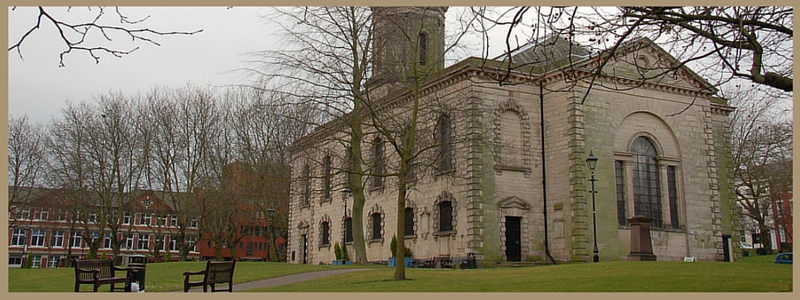
St. Paul’s Church and St. Paul’s Square
St Paul’s Church
St Paul’s Church is actually one of two that had been built under the Act of Parliament of 1772.
Robert Eykyn, a surveyor from Wolverhampton, designed the Church, with local architect Samuel Wyatt acting as his partnering advisor.
In 1779, the Church was consecrated.
Six years later, commissioned by a Vestry Meeting, a man named Francis Eginton was to create a painted glass window that centred on the conversion of St Paul. Samuel Wyatt was to design the setting for the window that was to be painted, in what is described as the altar piece.
The first Minister of the Church was William Young, a scholar, musician and curate of St Martin’s Parish Church of Birmingham.
St Paul’s Square
St Paul’s Square is the last remaining Georgian Square in Birmingham, and is named after the small cathedral at its centre.
The Square was built on the Newhall Estate of the Colmore family in 1777-79. During the mid-nineteenth century, this was a desirable location that exuded elegance. Unfortunately, the end of the nineteenth century deemed the end of the natural beauty of the Square. It became ingested by workshops and factories, the front of some buildings being torn down to enable shop fronts and factory entrances.
Many of those buildings that surround the Square are Grade II listed.
